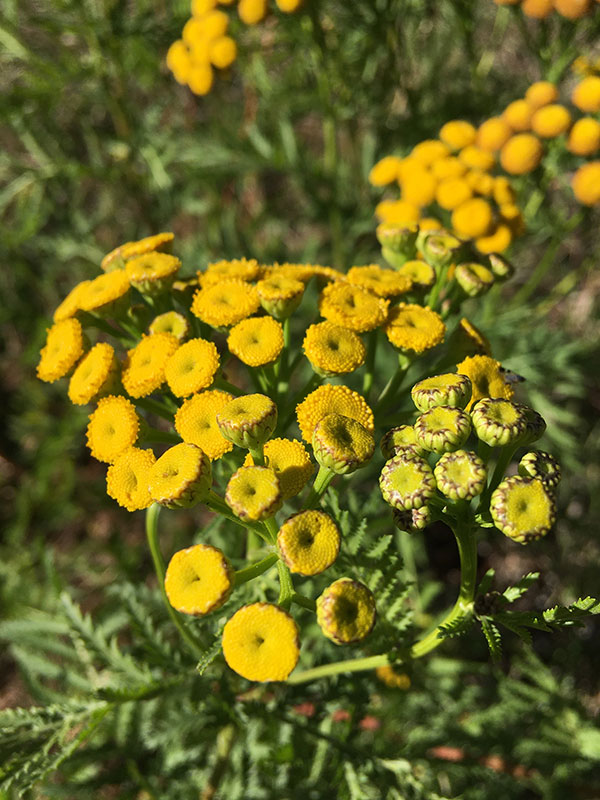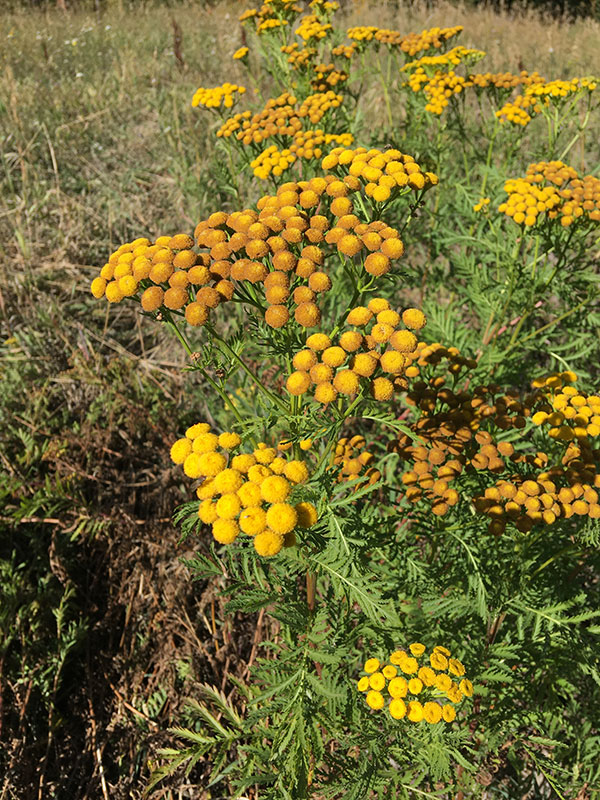Tanacetum vulgare / tansy
- yellow, somewhat flattened, button-like flowers
- pretty clearly in the aster family
- camphor-ish smell
- finely divided, fern-like compound leaves
Synonyms: Tanacetum aubiderti, Chrysanthemum vulgare, C. tanacetum
Also known as: common tansy, bitter buttons, cow bitter, golden buttons, golden tansy
“Tansy” is a cute little name, but “golden buttons” really describes this flower to a T. It could even be called “brass buttons”. It’s leaves are also quite distinctive, being highly divided and fern-like. In any case, these interesting flowers show up in mid-to-late summer in a variety of habitats, especially ones that have experienced disturbance, like ditch banks, riparian areas, vacant lots, gardens, pastures, railroads, roadsides, irrigation ditches, stream banks, and lake shores. You get the picture.
Although they are small – only about a half inch across – each flower head is complex, including as many as 100 individual disk florets, and few, if any, ray flowers. Each of the florets (other than those at the outer periphery) is “perfect”, meaning it has both male and female structures. The outermost florets, on the other hand, are only pistillate (having only female structures). Seeing this even with a hand lens is difficult.
Tansies are perennial and rhizomatous, sometimes leading to growth in clumps. Most reproduction, however, seems to be by seed.
Tansies are unlike most other non-native weeds in that their introduction and spreading history is pretty well documented, beginning with arrival, on purpose, on the Mayflower. Like other “medicinal” species, tansy’s use in that regard is largely a thing of the past. It is still, however, cultivated as an insect repellant companion plant around or in amongst other desirable herbs and crops… including around potato fields. The leaves in particular have a camphor-like aroma, or like pine, or like chrysanthemums. These scents reportedly confuse insects looking for a quick meal; a spray based on ground-up plants may also have insecticidal properties, and other than the fact that it might cause contact dermatitis, it’s also putatively a somewhat effective natural mosquito repellant.
| Color | |
|---|---|
| Family | |
| Blossom size | |
| Inflorescence size | |
| Inflorescence type | |
| When? | |
| Where? |


